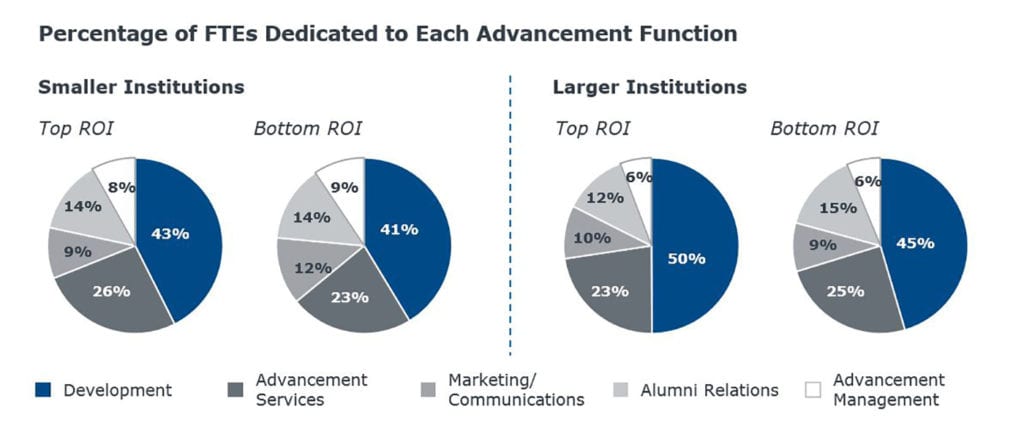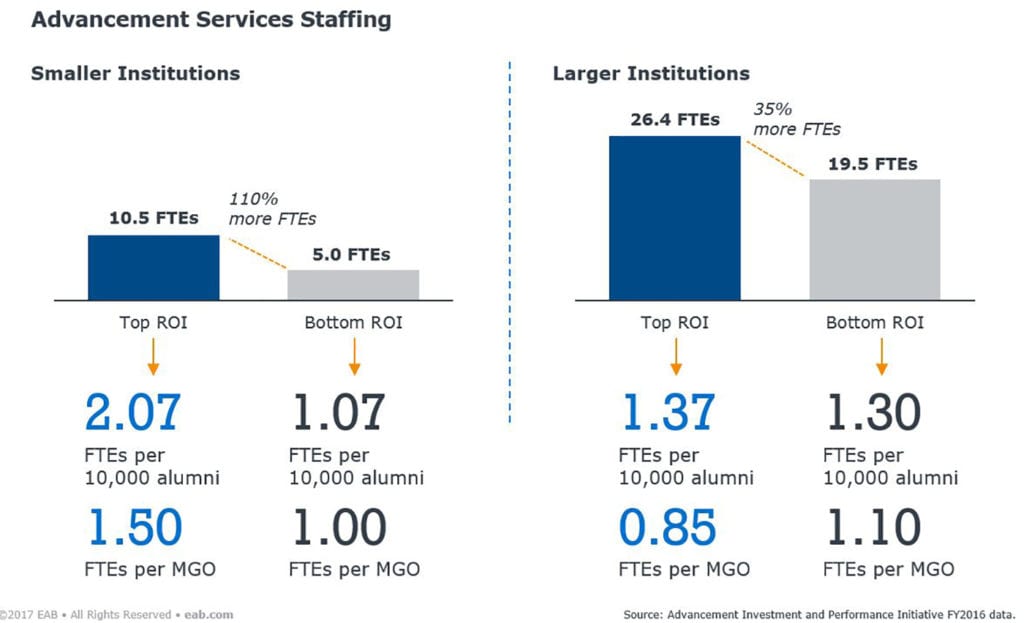How strategic staffing can increase your ROI
December 11, 2017
We live in an era of outsized expectations: Presidents and board members increasingly look to the advancement office to bring in more revenue every year.
Yet they don’t always understand the full scope of the investments and staffing structures needed to achieve those returns.
Those misaligned expectations inspired us to launch the Advancement Investment Performance Initiative (AIPI) last year to collect data to show what kinds of investments are necessary for improved ROI.
It didn’t surprise us when we found that our FY2016 AIPI data shows performance follows investment: More FTEs mean more revenue. And not only do they bring higher returns—they also bring more efficient returns. As shop size increases, ROI goes up: Every marginal dollar spent brings in more than the one before.
However, simply adding more advancement staff is not the answer. Our data shows that it’s not how many FTEs you add, but where you add them in your advancement shop that produces high ROI.
Staff for your team’s specific needs
To figure out what mix of advancement staff leads to the greatest returns, we split our benchmarking group into two “alumni of record” cohorts and analyzed each to figure out what distinguished top-ROI from bottom-ROI shops.
One of the analyses looked at the overall composition of the shop: What share of FTEs went to development in top-ROI shops? What share to advancement services? And alumni relations?

Unsurprisingly, top-ROI shops across cohorts focus more on frontline fundraising than their bottom ROI counterparts. But development can’t succeed by itself. Other advancement functions play a critical role in driving fundraising performance, and larger investments in some of those functions—advancement services and marketing and communications—tend to yield higher returns.
Heavy advancement services staffing play a crucial role at smaller institutions, with top-ROI institutions in that cohort dedicating 3 percentage points more of their total FTEs to advancement services. These shops’ scarce resources make efficiency a high priority. Here, advancement services plays a key role in ensuring fundraisers make the most of their limited time.
At larger institutions, we tend to see increased staffing investments in marketing and communications correlate with higher ROI. The scale that these institutions operate on means that the timely, personalized donor and alumni communications have an outsized impact on the success of solicitations and gift proposals.
Ensure support for the frontline
Although larger institutions dedicate proportionally fewer staff to advancement services, one of the distinguishing features of top-ROI institutions across cohorts is heavier advancement services staffing overall.
Among smaller institutions, shops with the highest ROI have more than twice as many advancement services FTEs as shops with lower ROI. At larger institutions, higher ROI shops have about one-third more FTEs in advancement services than large shops with lower ROI. Without the support of a strong, well-staffed advancement services team, small and large institutional development efforts will consistently produce disappointing returns.

More Blogs

4 ways advancement leaders can make the most of the summer

4 key data trends shaping higher education fundraising
